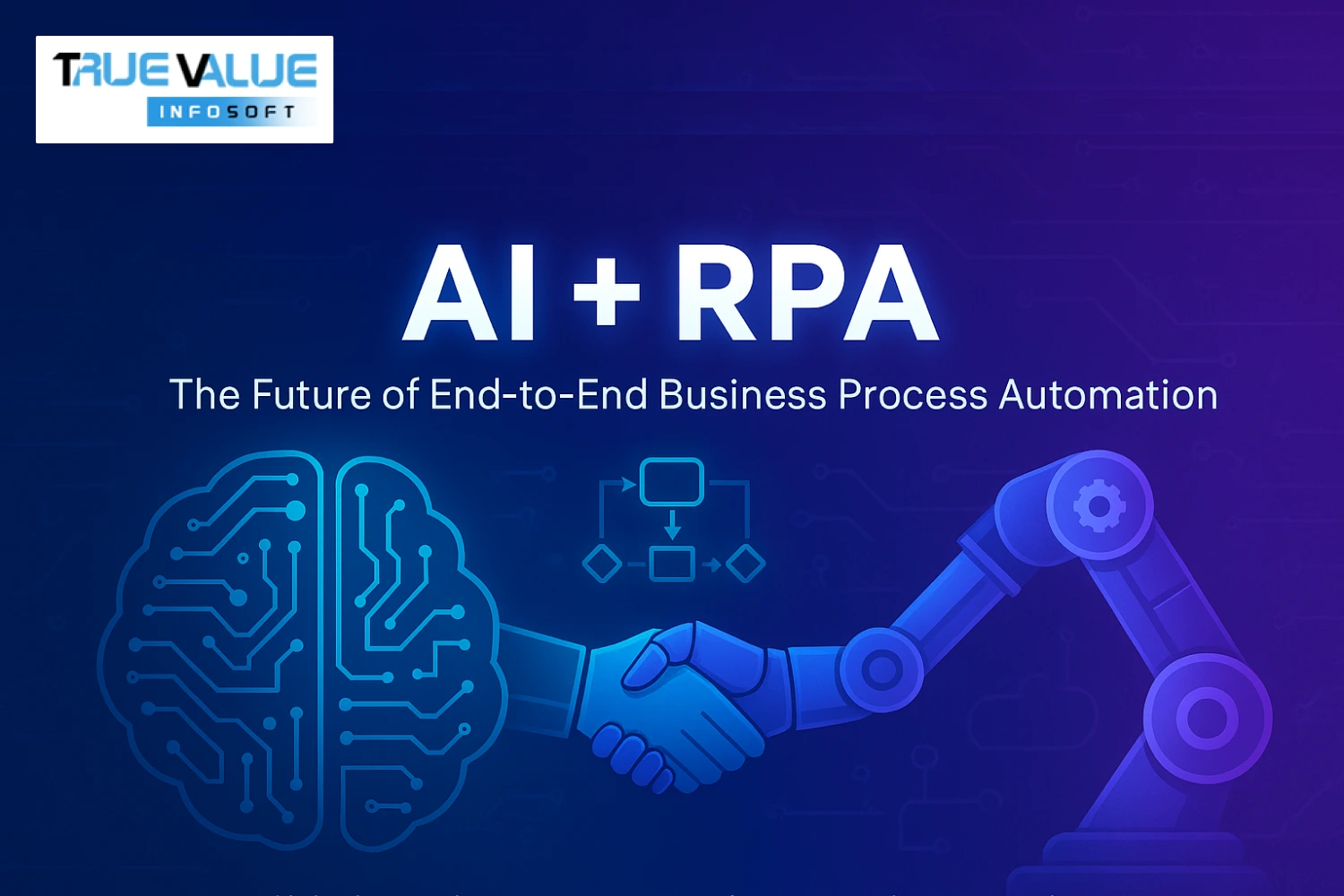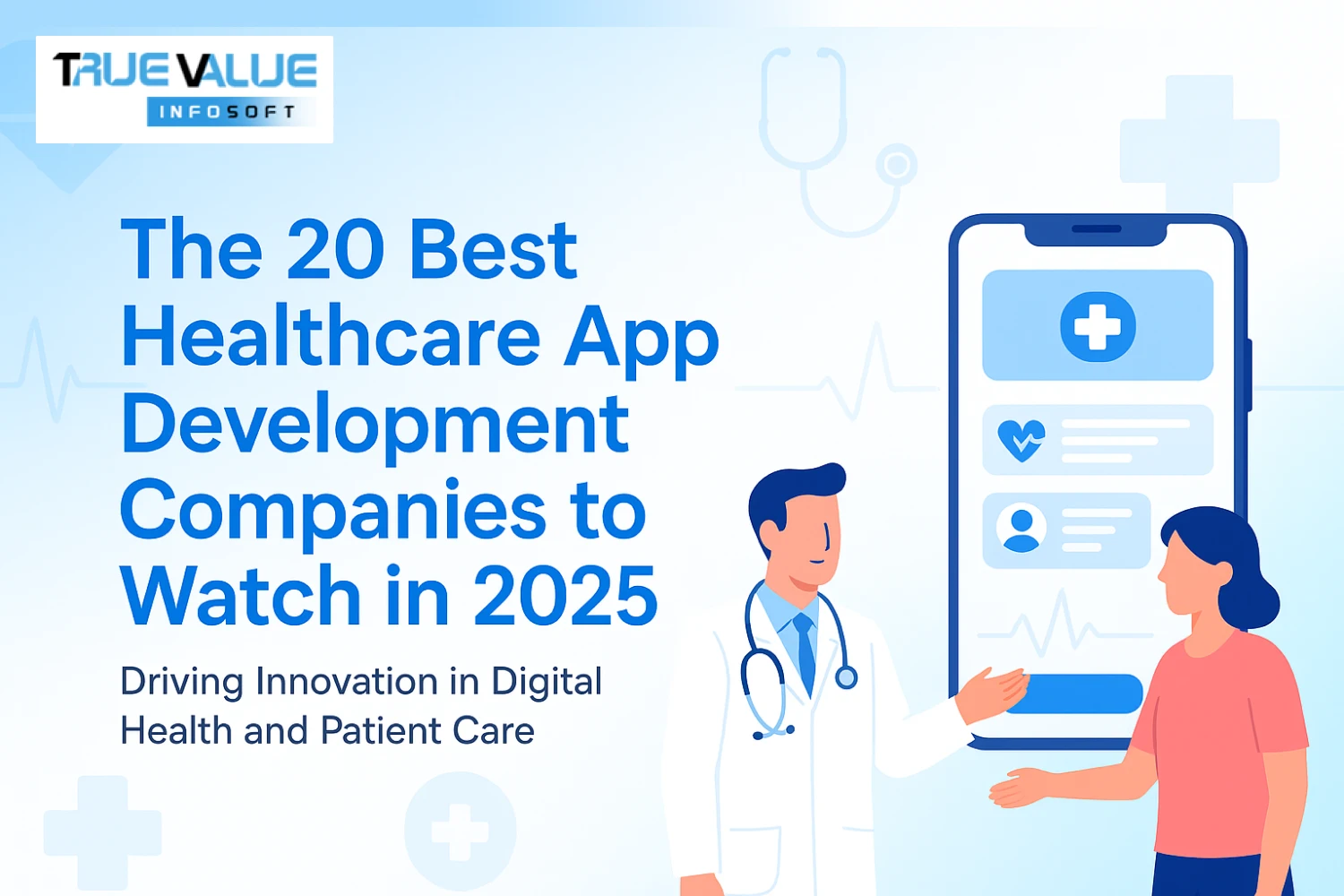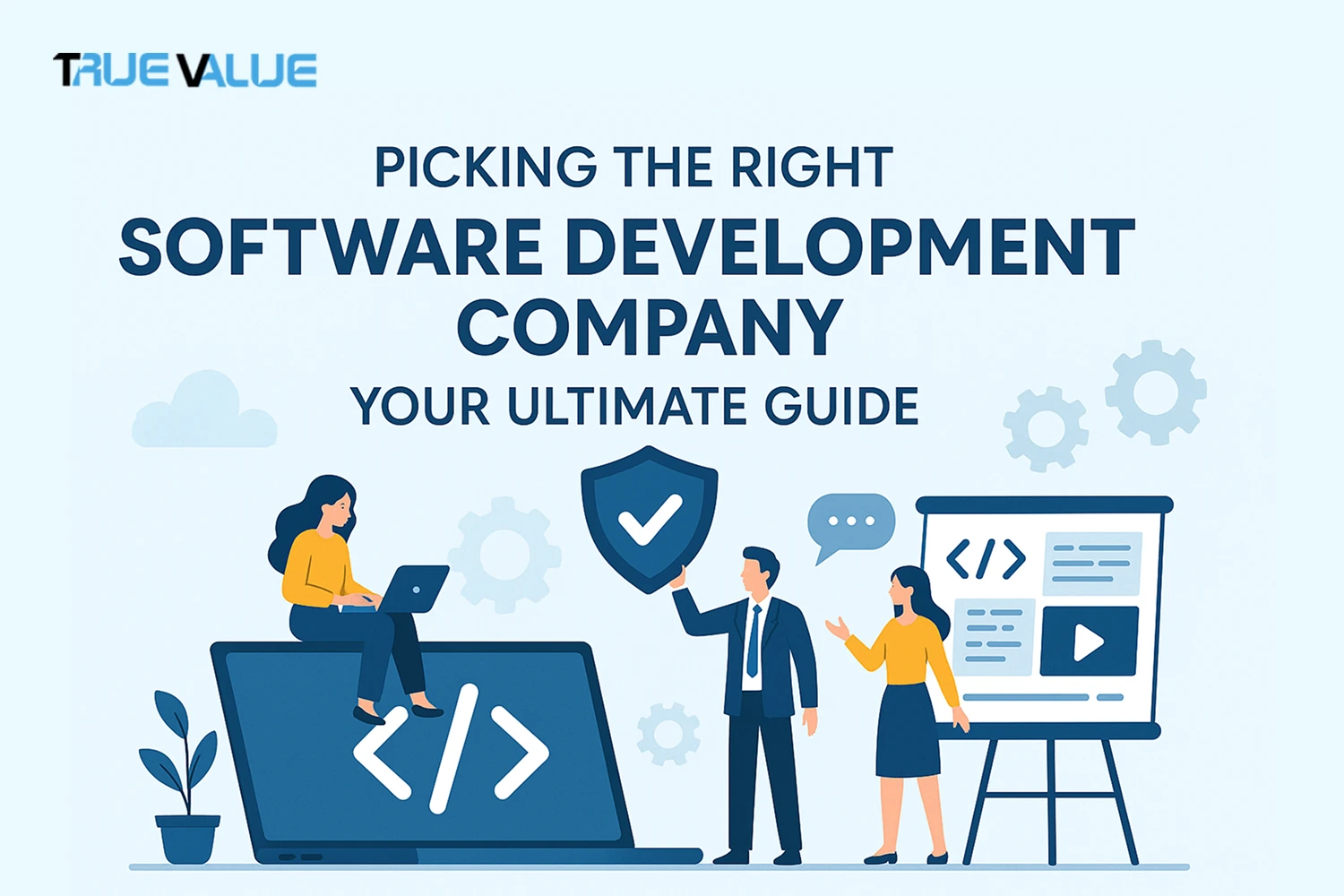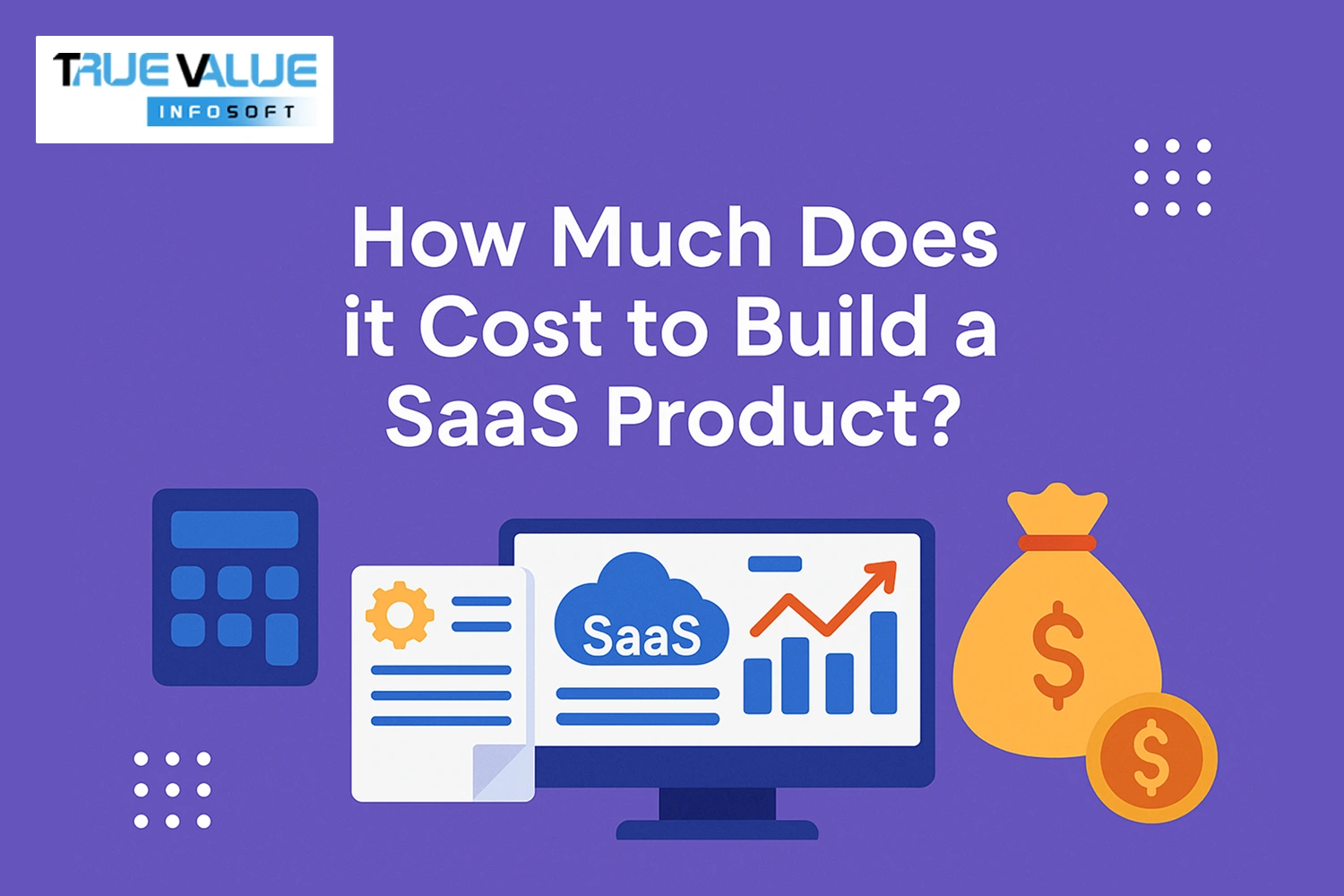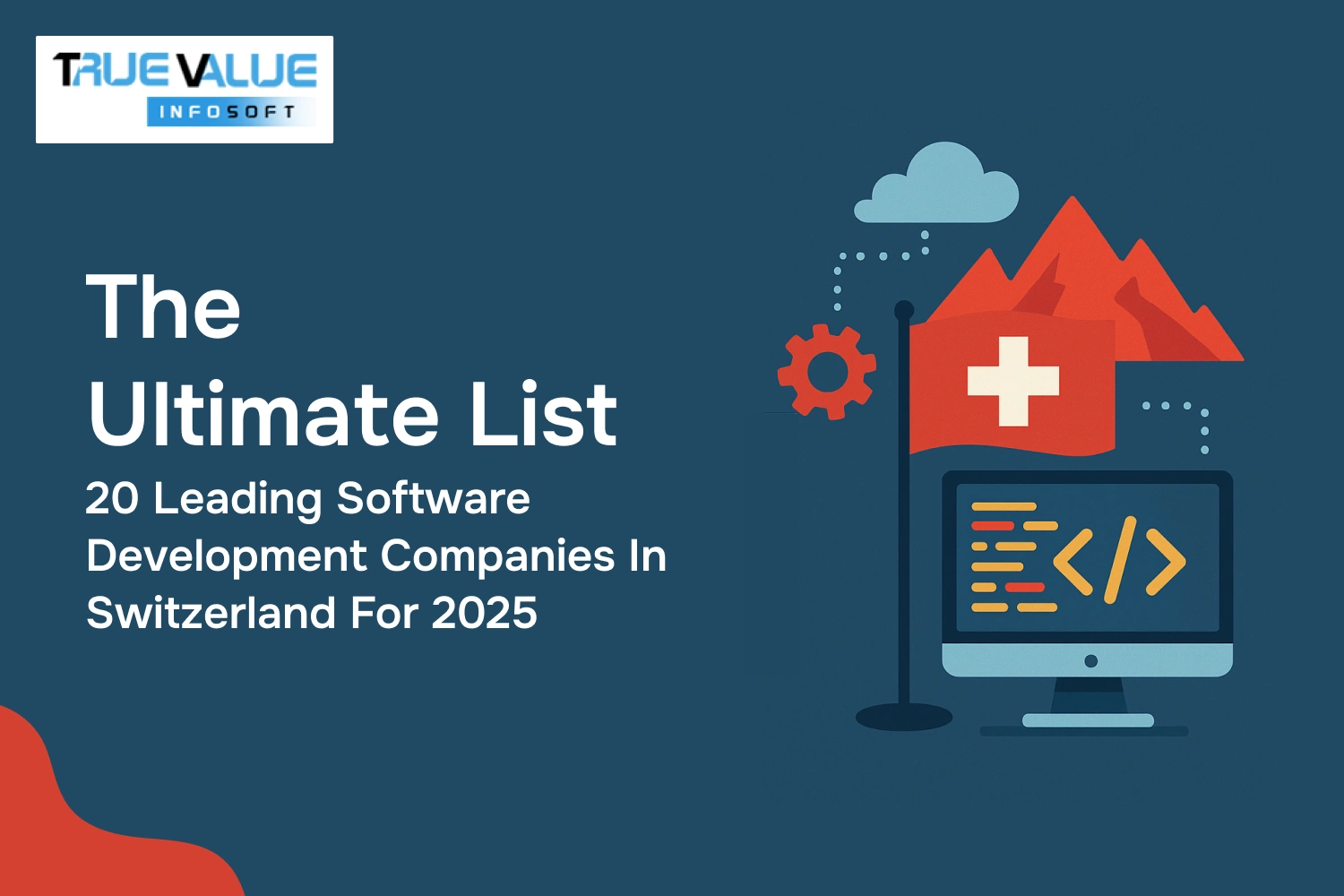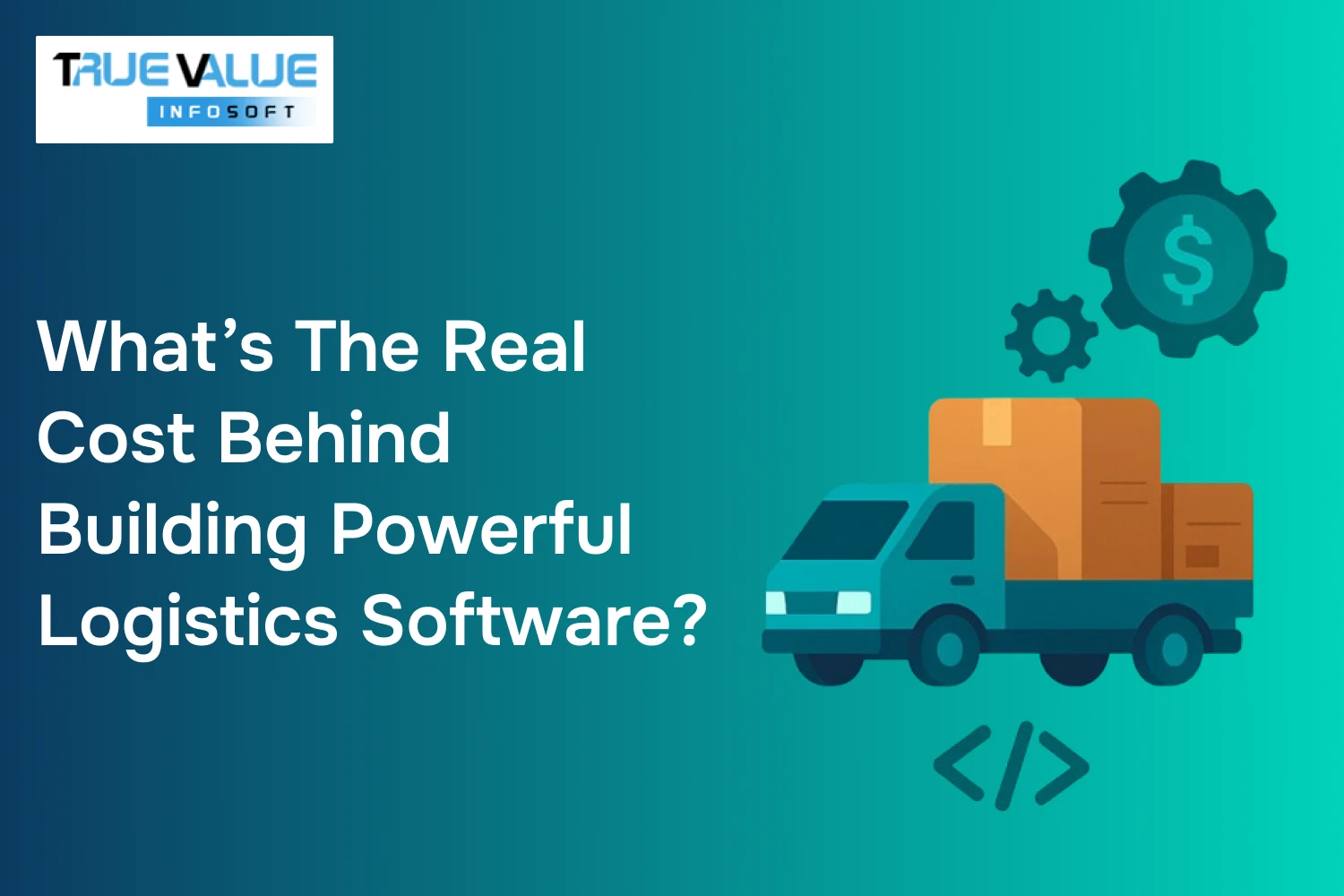Introduction
Ever wondered how businesses are transforming their operations to achieve unmatched efficiency and accuracy? The answer lies in the powerful combination of Artificial Intelligence (AI) and Robotic Process Automation (RPA). Together, AI and RPA are revolutionizing end-to-end business process automation by enabling companies to automate complex workflows that were once reliant on manual human intervention.
AI brings intelligence to automation—allowing machines to understand, learn, and adapt—while RPA handles repetitive, rule-based tasks swiftly and flawlessly. This synergy helps businesses reduce errors, speed up processes, and cut operational costs, all while freeing human employees to focus on strategic, value-driven activities.
As organizations across industries embrace this future, partnering with the best app development company in India, True Value Infosoft, becomes a crucial step. True Value Infosoft specializes in developing intelligent automation solutions that seamlessly integrate AI and RPA technologies. Their expertise ensures customized, scalable, and secure automation apps tailored to business needs.
With True Value Infosoft’s cutting-edge AI + RPA solutions, companies can unlock new levels of productivity and innovation—truly shaping the future of end-to-end business process automation. If your business aims to stay competitive in 2025 and beyond, exploring AI-powered RPA is no longer optional; it’s essential.
The Basics of RPA and AI
What is Robotic Process Automation (RPA)?
Robotic Process Automation is a technology that uses software bots to automate repetitive, routine tasks that follow predefined rules. These bots can mimic human actions such as data entry, copying and pasting between systems, transaction processing, and report generation. RPA is best suited for structured data environments with standardized workflows.
What is Artificial Intelligence (AI)?
Artificial Intelligence involves creating computer systems that can perform tasks that usually require human intelligence. This includes machine learning (ML), natural language processing (NLP), computer vision, and cognitive reasoning. AI systems can analyze unstructured data, make predictions, and learn from data patterns.
How AI Enhances RPA
While RPA handles rule-based automation efficiently, it struggles with tasks involving unstructured data or requiring decision-making capabilities. AI complements RPA by enabling bots to understand, interpret, and act upon complex data inputs. This combination is often referred to as Intelligent Process Automation (IPA) or Cognitive Automation.
Key Components of AI + RPA Automation
- Machine Learning (ML): Enables bots to learn from data and improve their performance over time without explicit programming.
- Natural Language Processing (NLP): Allows bots to understand and generate human language, useful for automating customer interactions, document processing, and sentiment analysis.
- Computer Vision: Facilitates interpretation of images and videos, enabling automation of tasks like invoice scanning and quality inspection.
- Process Mining: Helps discover, monitor, and optimize real business processes by analyzing event logs, identifying bottlenecks for automation.
- Intelligent Document Processing (IDP): Uses AI to extract, classify, and validate data from various document formats, improving accuracy in data entry automation.
Benefits of Combining AI and RPA
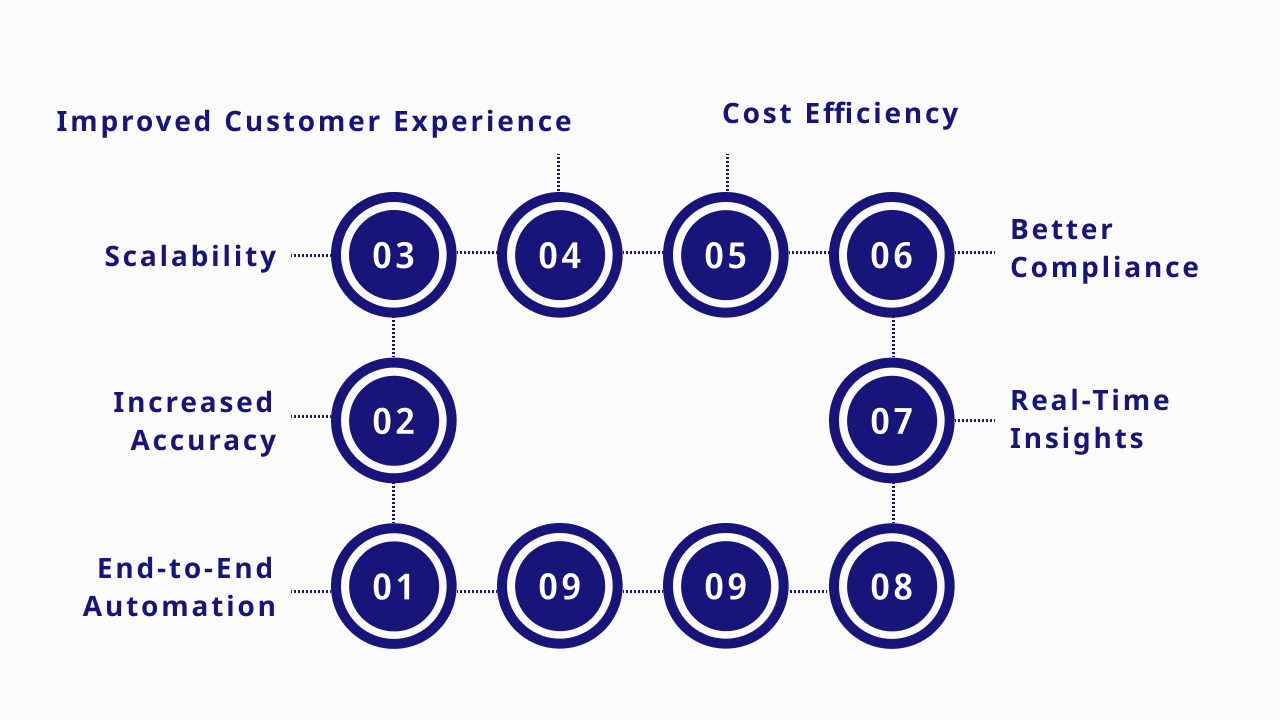
- End-to-End Automation: Enables automation of entire workflows from start to finish, including decision-based and data-intensive tasks.
- Increased Accuracy: AI’s ability to handle unstructured data reduces errors common in manual processing.
- Scalability: Organizations can scale automation across multiple departments and complex processes.
- Improved Customer Experience: Faster processing and intelligent interactions enhance customer satisfaction.
- Cost Efficiency: Reduces operational costs by minimizing manual labor and increasing throughput.
- Better Compliance: Automated audit trails and rule enforcement reduce regulatory risks.
- Real-Time Insights: AI analytics provide actionable insights for continuous process improvement.
Common Use Cases of AI + RPA in Business Automation
Finance and Accounting
- Invoice processing with AI-powered Optical Character Recognition (OCR) combined with RPA bots for data extraction and payment processing.
- Fraud detection using AI models that analyze transaction patterns.
- Automated reconciliation of accounts payable and receivable.
Customer Service
- Chatbots powered by NLP and RPA for handling common customer queries without human intervention.
- Sentiment analysis to route complex issues to appropriate support agents.
- Automated ticket creation and follow-up.
Human Resources
- Resume screening and candidate shortlisting using AI-driven analytics.
- Automated onboarding workflows, including document verification and training scheduling.
- Employee query handling via AI-powered virtual assistants.
Supply Chain and Logistics
- Predictive analytics for demand forecasting and inventory optimization.
- Automated order processing and shipment tracking.
- Quality inspection using computer vision to detect defects.
Healthcare
- Patient data extraction from medical records using AI OCR.
- Scheduling appointments and sending reminders through RPA bots.
- Automating insurance claims processing with AI-driven validation.
Challenges and Limitations of AI + RPA
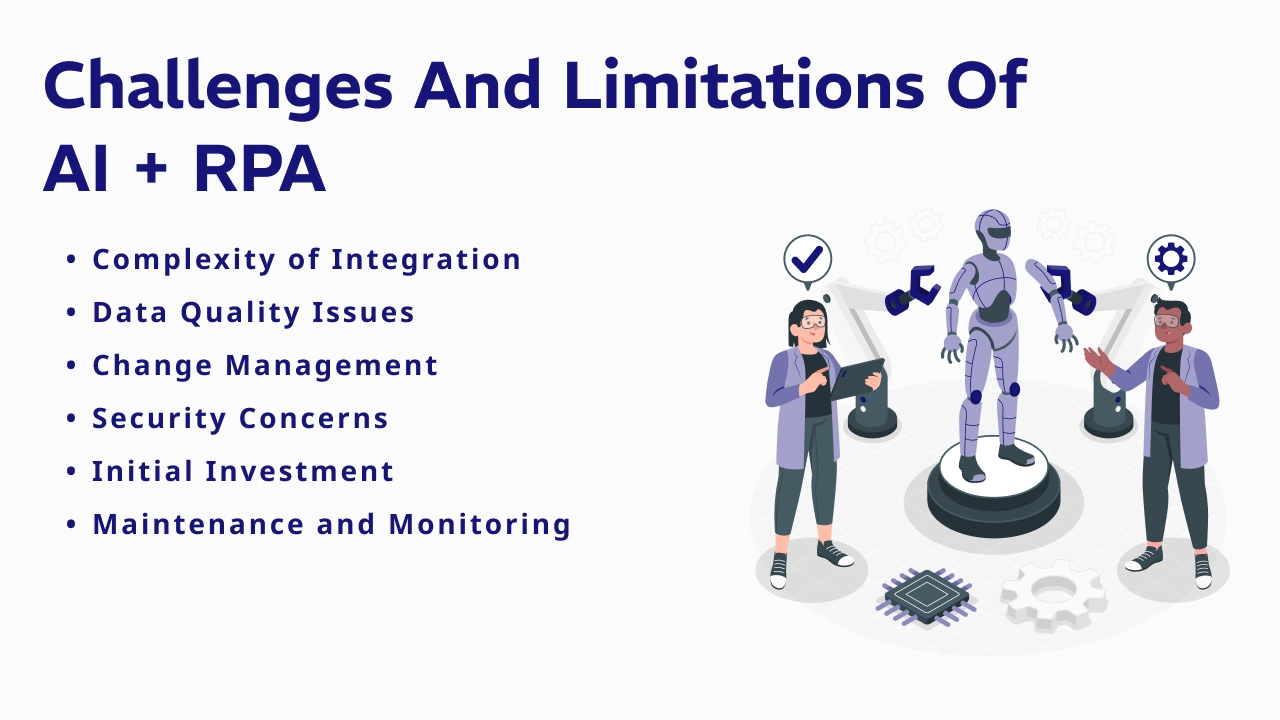
While AI and RPA offer tremendous benefits, organizations must be aware of potential challenges:
- Complexity of Integration: Combining AI with RPA requires advanced technical expertise and may involve integration challenges with legacy systems.
- Data Quality Issues: AI’s effectiveness depends on high-quality data; poor data can lead to inaccurate outputs.
- Change Management: Employees may resist automation fearing job losses, requiring thoughtful change management strategies.
- Security Concerns: Automated systems must be secured against cyber threats, data breaches, and compliance violations.
- Initial Investment: Developing and deploying intelligent automation solutions can be costly upfront.
- Maintenance and Monitoring: Continuous monitoring is essential to ensure AI models and bots perform accurately and adapt to changing business needs.
The Role of Process Mining in AI + RPA
Process mining is a critical enabler of intelligent automation, offering a data-driven approach to identify which processes are suitable for automation and uncovering inefficiencies.
- Discovery: Automatically mapping out real process flows from system logs.
- Conformance Checking: Comparing actual workflows against desired models to detect deviations.
- Enhancement: Identifying bottlenecks and improvement opportunities.
- Continuous Automation: Feeding insights back into automation tools for refinement.
Organizations employing process mining tools can significantly reduce the risk of automating inefficient workflows and optimize their automation ROI.
AI + RPA Tools and Platforms
Several leading platforms offer AI-enhanced RPA capabilities:
- UiPath: Provides a comprehensive suite combining RPA, AI Fabric for ML model deployment, and document understanding.
- Automation Anywhere: Integrates AI with RPA through IQ Bot for cognitive automation.
- Blue Prism: Offers AI skills for cognitive automation integrated with RPA.
- Microsoft Power Automate: Combines RPA with AI Builder to add intelligence to workflows.
- WorkFusion: Provides a unified platform for AI-powered RPA with pre-built bots and ML capabilities.
These tools enable organizations to start small and scale automation with AI intelligence.
Best Practices for Implementing AI + RPA
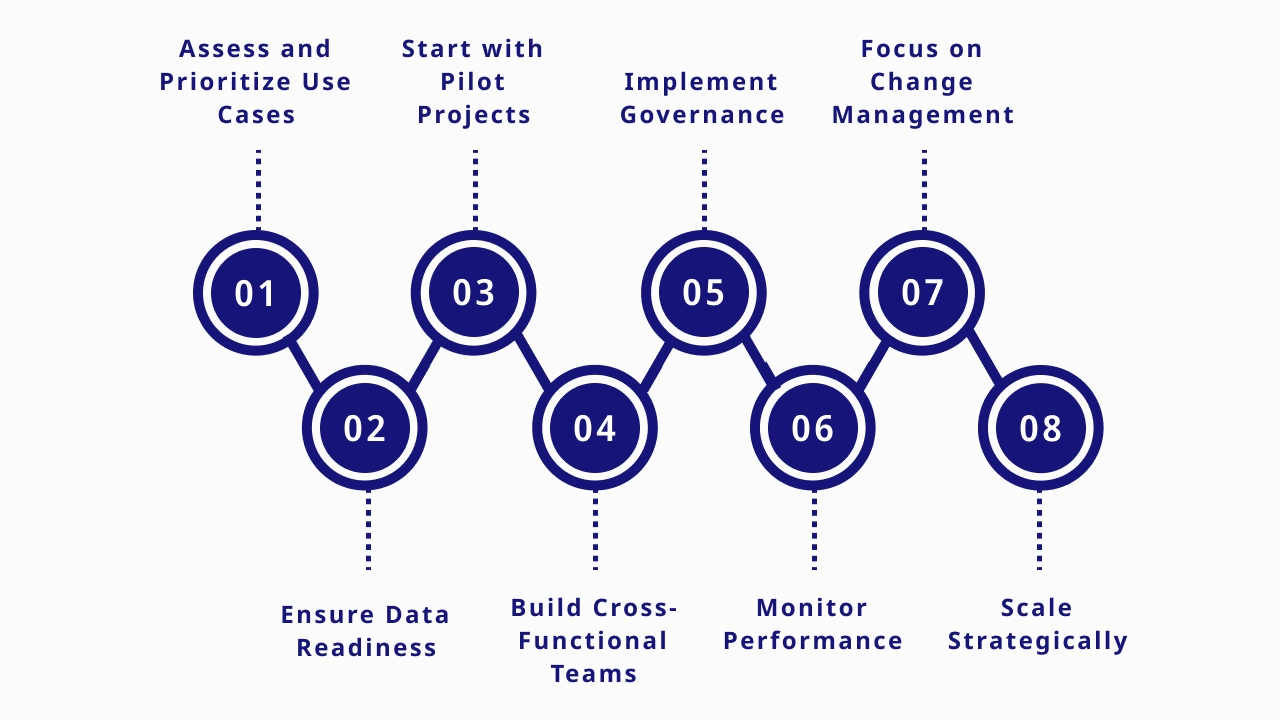
- Assess and Prioritize Use Cases: Identify processes with high volume, repetitive tasks, and decision points suitable for AI + RPA.
- Ensure Data Readiness: Clean and structure data to enhance AI model accuracy.
- Start with Pilot Projects: Begin with manageable projects to demonstrate value and refine approaches.
- Build Cross-Functional Teams: Include business analysts, IT experts, and process owners for successful deployment.
- Implement Governance: Define policies for bot management, security, and compliance.
- Monitor Performance: Use analytics dashboards to track bot activity, error rates, and ROI.
- Focus on Change Management: Communicate benefits clearly and train employees for collaboration with bots.
- Scale Strategically: Expand automation based on lessons learned and evolving business needs.
Real-World Examples of AI + RPA Success
- A Leading Bank: Automated loan processing combining AI-powered document extraction and RPA bots reduced approval time by 70%.
- Global Insurance Company: Deployed AI chatbots integrated with RPA for claims handling, improving customer response times and lowering operational costs.
- Healthcare Provider: Used AI and RPA for patient registration and billing, cutting manual errors by 50%.
- Retail Giant: Automated inventory management and demand forecasting using AI-enhanced RPA, resulting in better stock availability and reduced waste.
Future Trends in AI + RPA
- Hyperautomation: Combining multiple automation tools and AI technologies for end-to-end automation of complex workflows.
- AI-Driven Process Discovery: Automated identification of automation opportunities using AI analytics.
- Conversational AI: Enhanced human-bot interactions through natural language understanding and voice recognition.
- Edge AI and RPA: Deploying bots closer to data sources at the edge for real-time automation.
- Integration with Blockchain: Enhancing transparency and security in automated processes.
- Ethical AI: Focus on bias mitigation, transparency, and compliance in intelligent automation systems.
The Impact on the Workforce
While AI + RPA automates many tasks, it also reshapes jobs:
- Augmentation over Replacement: Bots handle repetitive tasks, freeing employees for creative and strategic work.
- New Roles: Demand for automation specialists, AI trainers, and bot managers rises.
- Skill Development: Continuous learning becomes essential to adapt to an AI-powered workplace.
- Employee Empowerment: Automation tools integrated into daily workflows improve productivity and job satisfaction.
Organizations must invest in reskilling and upskilling programs to harness the full potential of AI + RPA.
How to Get Started with AI + RPA in Your Business
- Identify Automation Goals: Define clear objectives such as cost reduction, speed improvement, or enhanced accuracy.
- Map Current Processes: Document workflows to find automation candidates.
- Evaluate Technologies: Choose platforms that suit your industry and scale.
- Collaborate with Experts: Partner with experienced vendors or consultants.
- Implement Incrementally: Deploy bots stepwise to manage risk and measure benefits.
- Measure and Optimize: Use KPIs like processing time, error reduction, and user satisfaction to refine automation.
Why Businesses Need AI + RPA Today
The business environment is more competitive and customer-centric than ever. To stay ahead, organizations must:
- Respond quickly to market changes.
- Handle growing data volumes effectively.
- Improve operational agility.
- Deliver consistent, high-quality customer experiences.
- Optimize costs without sacrificing service.
AI + RPA together provide a strategic advantage, enabling businesses to automate intelligently and innovate continuously.
Why Choose True Value Infosoft for AI + RPA Software Development in India
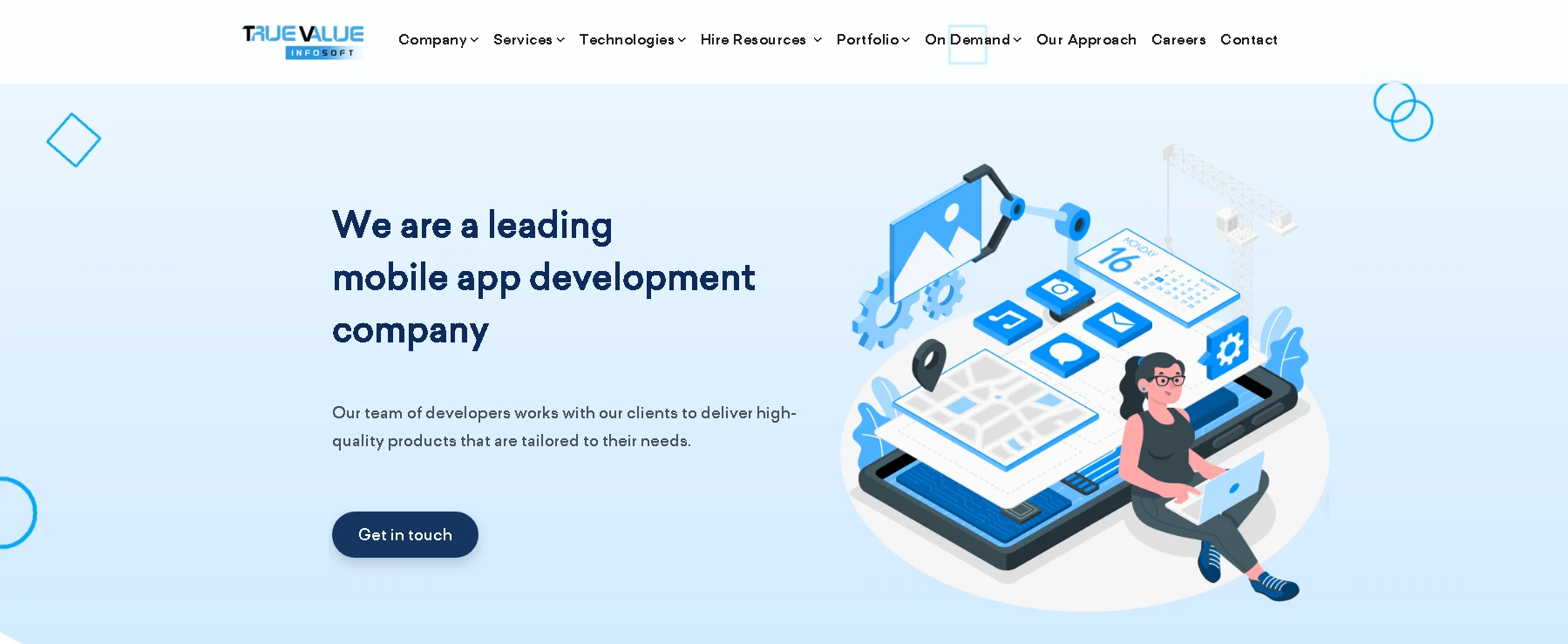
When it comes to AI + RPA (Robotic Process Automation) integration for end-to-end business process automation, True Value Infosoft stands out as the best software development company in India. With a strong focus on innovation, reliability, and scalability, True Value Infosoft is empowering organizations to streamline operations, reduce manual effort, and maximize efficiency through intelligent automation.
Here’s why True Value Infosoft is the right partner for AI + RPA projects:
- Expertise in AI & RPA Integration: True Value Infosoft brings deep knowledge in building intelligent bots, AI algorithms, and automation flows tailored to various industries.
- Custom Solutions for Complex Workflows: Whether it's invoice processing, customer service, HR automation, or supply chain optimization — they build personalized automation tools for maximum impact.
- Cost-Efficient and Scalable Platforms: Their development approach ensures low total cost of ownership while enabling seamless scaling as business demands grow.
- Agile Development Methodology: Projects are delivered faster, with iterative feedback loops and transparency.
- End-to-End Support: From consulting to deployment and post-launch maintenance, True Value Infosoft offers complete lifecycle management.
Choosing True Value Infosoft means embracing the future of automation with a trusted Indian partner who understands both technology and business transformation.
Conclusion
Artificial Intelligence combined with Robotic Process Automation represents the future of end-to-end business process automation. This fusion enables organizations to automate not just routine tasks but also complex cognitive functions, driving greater efficiency, accuracy, and scalability.
As AI technologies mature and integration with RPA deepens, intelligent automation will become a core business capability. Companies that embrace AI + RPA today position themselves to thrive in the digital economy, unlocking new growth opportunities and operational excellence.
To succeed, businesses must carefully plan, adopt best practices, and invest in people as much as technology. With the right approach, AI + RPA can transform workflows, empower employees, and deliver exceptional value in a constantly evolving marketplace.
FAQs
RPA (Robotic Process Automation) automates rule-based, repetitive tasks by mimicking human interactions with software systems, while AI (Artificial Intelligence) enables machines to learn, reason, and make decisions. Together, they enhance automation by combining speed with intelligence.
AI + RPA reduces manual effort, increases accuracy, and accelerates workflows. It enables 24/7 operations, better resource utilization, and faster turnaround times, which ultimately improves customer satisfaction and reduces operational costs.
Industries like banking, healthcare, retail, insurance, logistics, and manufacturing benefit significantly. These sectors have repetitive tasks and large data volumes that can be streamlined using intelligent automation.
Not necessarily. Scalable and cloud-based AI + RPA solutions make it affordable for SMEs. Companies like True Value Infosoft offer tailored solutions that balance cost and ROI effectively.
True Value Infosoft offers proven expertise, customized development, fast deployment, and full-cycle support. Their focus on innovation and client success makes them a trusted partner for future-ready automation projects.
